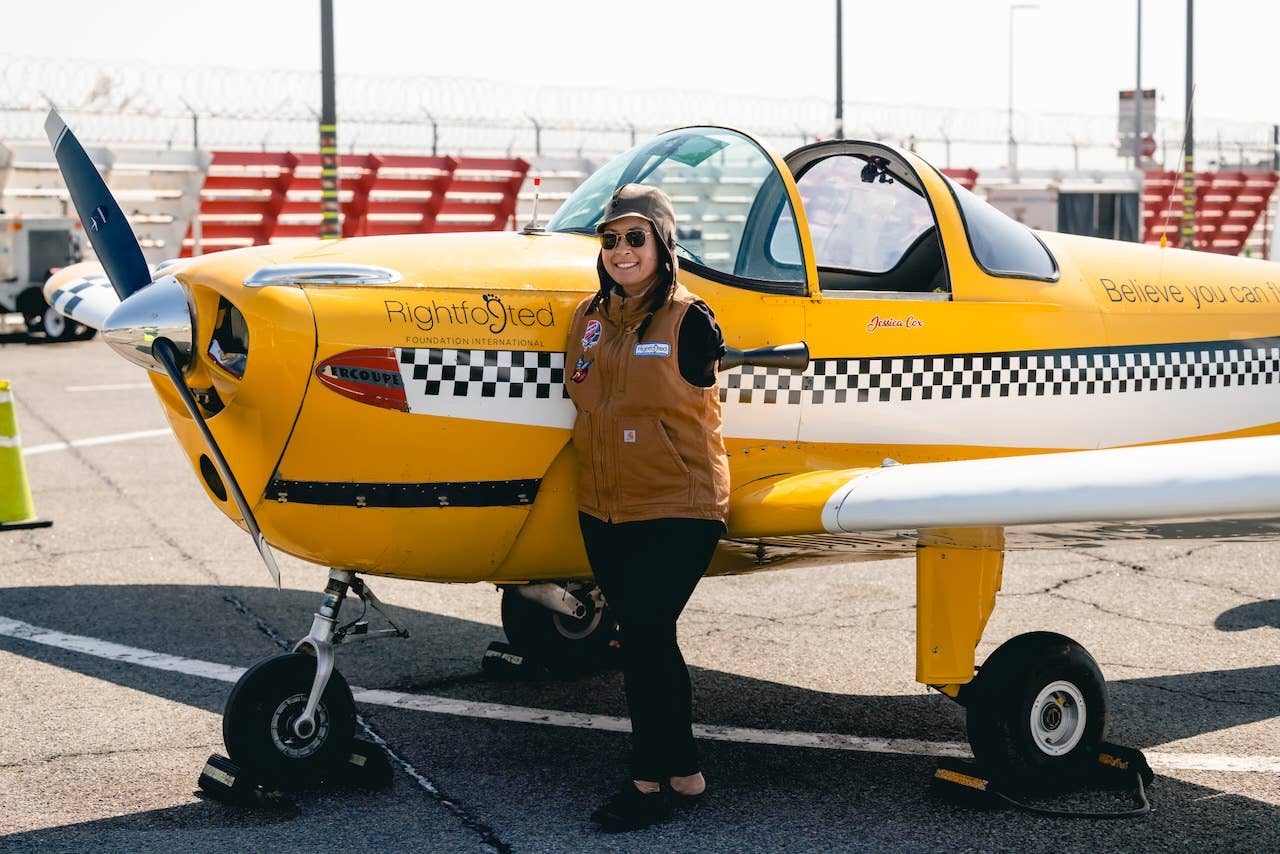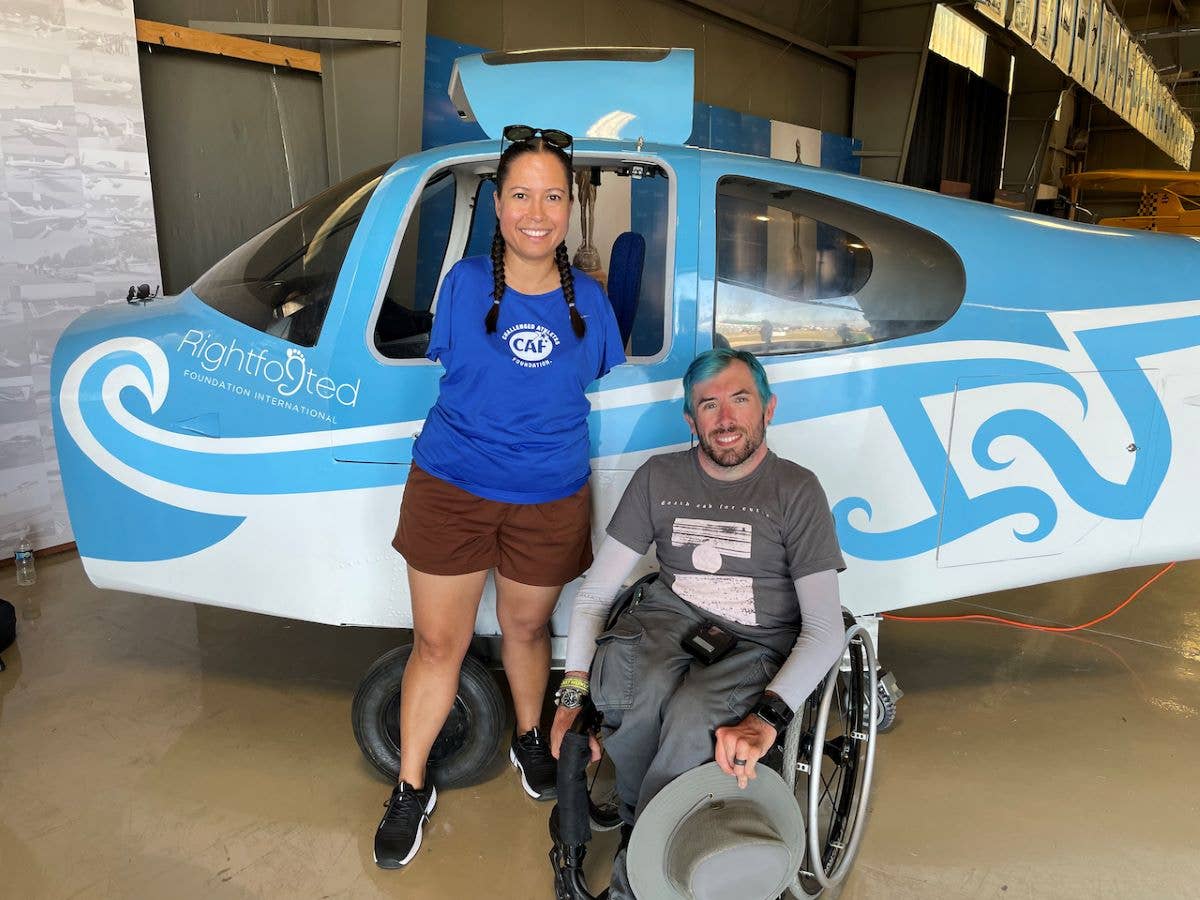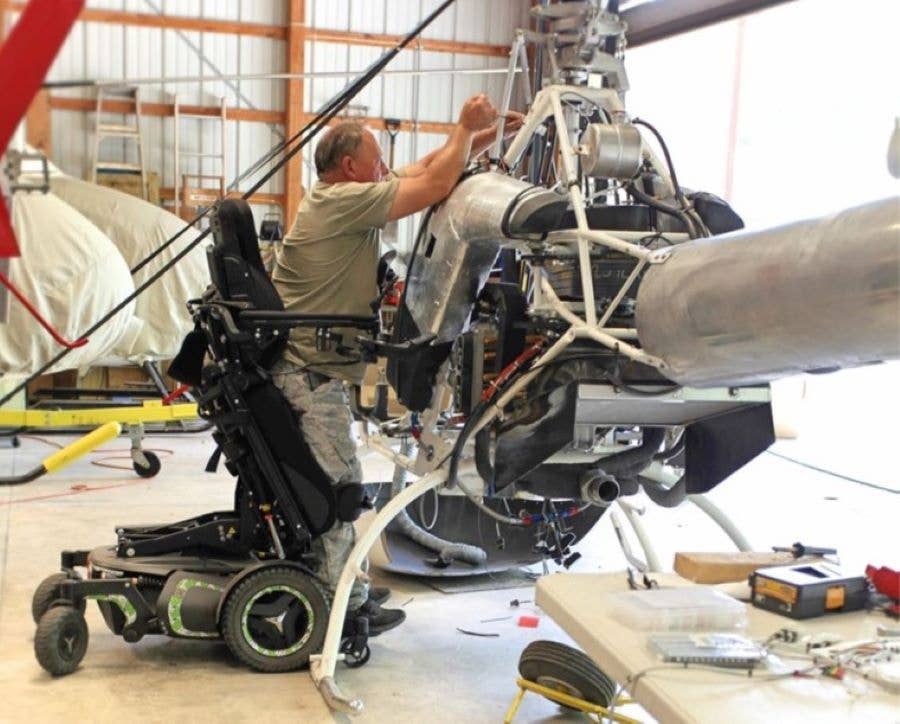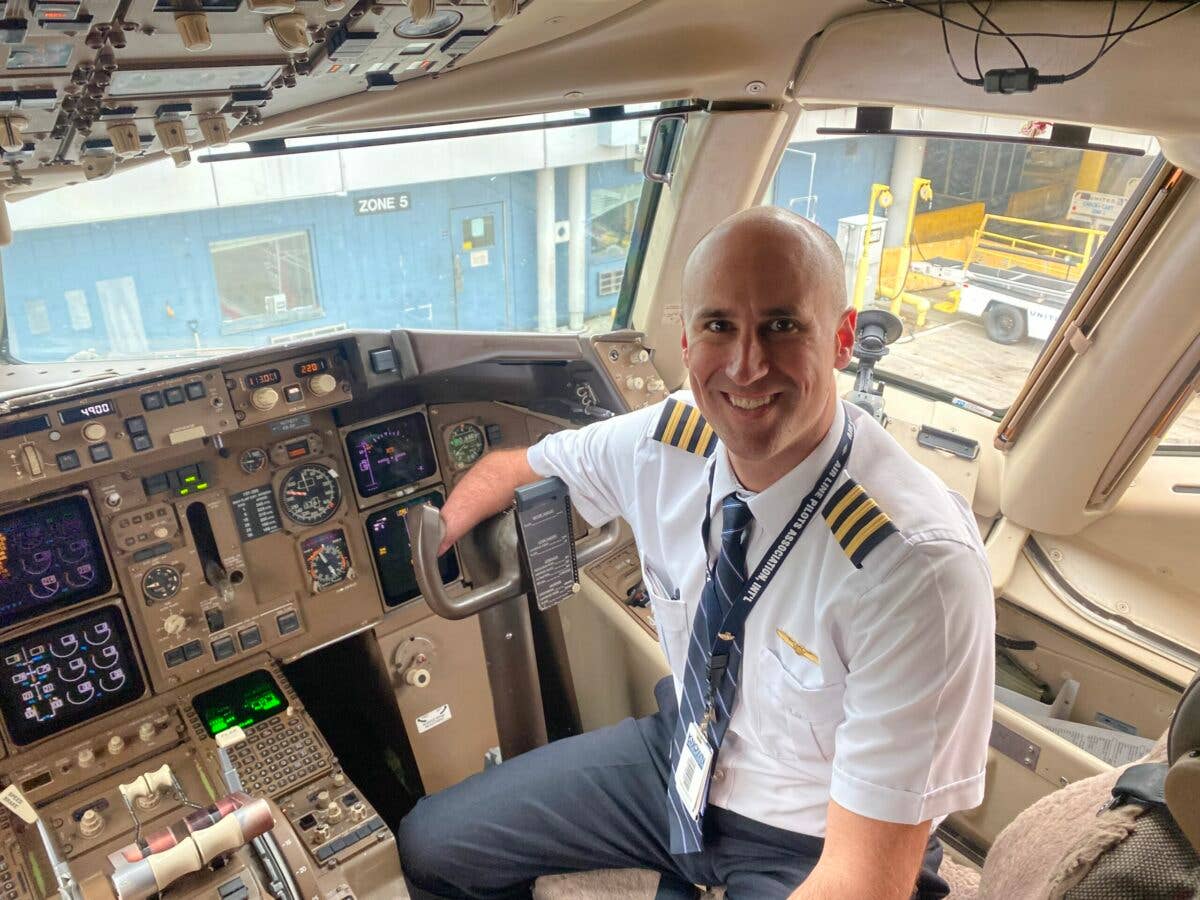A Museum for All Abilities
The ‘We All Fly’ exhibition at the Smithsonian National Air & Space Museum includes GA pilot stories.
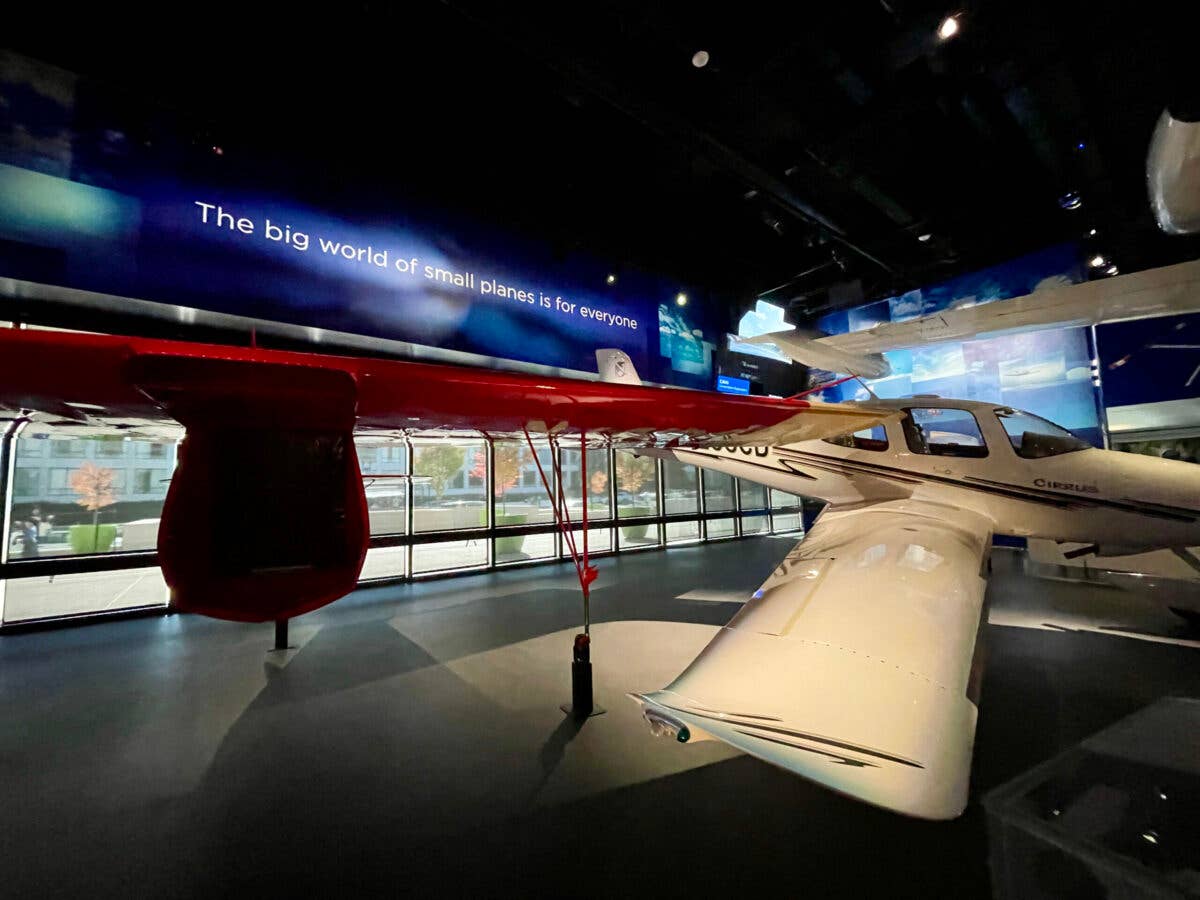
The statement ‘The big world of small planes is for everyone’ encapsulates the theme of the ‘We All Fly’ Exhibition. [Courtesy: Patrick Chamberlain]
A vital part of the aviation spirit in America has been missing for months, and it finally returned. And it's better than ever.
Last month, the Smithsonian invited me to the grand reopening of the National Air and Space Museum. The new "We All Fly" exhibition includes my story and the stories of many other GA pilots. I am honored that my story of flying with a disability can show aspiring aviators that aviation is within reach.
Can I tell you a secret? I never went to prom. Living with a disability is complicated, and it got the better of me in high school. A lot has changed since then, thanks in no small part to becoming a pilot. So what's a girl to do when invited to a gala that outshines the regret of not attending prom? I had a dress custom-made for me, featuring an image of my Ercoupe on the skirt.
For the first time, I felt like Cinderella at the ball. And also, for the first time, people noticed my dress before seeing my armlessness. It was magical.
Dressed-up party characters on stilts greeted us at the entrance to the museum. While walking around, I ran into an aviatrix on a bicycle. The short program started with a welcome address and expressions of gratitude for those involved in the museum renovations.
One of my favorite encounters was with Tom Haas, who supported the We All Fly exhibition through the Thomas A. Haas Foundation. I also complimented Sean Tucker on his upside-down airplane above the exhibition entrance. The event was blessed with great company, and there was a feeling of awe in the air. Seeing so much greatness in aviation filled me with gratitude for the opportunity to be a part of it all.
I couldn't help but ask for a picture with him when I spotted Mario Andretti. Because he is not an aviator, I was thinking about how to introduce myself. To my pleasant surprise, the first thing he said as I walked up to him was, "I heard you were coming…." (Blush.)
It feels special that disability is an essential focus of the museum's renovations. My story highlights the message that aviation should be accessible for all and, therefore, the museum should accommodate many disabilities. The We All Fly exhibition isn't alone in accessibility. All eight of the new galleries featured many ways for people to experience the history and future of aviation.
I remember going to my local public library as a child. I would kick off my shoes as I ran through the doors. I preferred being barefoot because I explored through my feet like they were my hands. And like any child, I wanted to be able to grab books, stuffed animals, and all the other toys in the library. Not having my shoes on was an accommodation I needed, but it worried a lot of adults. It was not "normal." Preventing me from going through the library barefoot was denying me the ability to explore in my own accommodated way.
About a week after the grand reopening, I went back to the museum to enjoy it leisurely with a few friends. I was even more impressed. My favorite elements are the original Wright Flyer and the life-size statues of Wilbur and Orville Wright.
The fantastic integration of multiple media methods provided an experience that truly brought the exhibits to life. As a disability advocate, I have a radar for inclusive practices in public places and attractions. The inclusivity of the museum was evident from the beginning. There are tactile experiences in some of the exhibits for those with visual disabilities. There is closed captioning on the videos for the hard of hearing. There are interactive exhibits that allow children to learn about aviation.
The elevator interior looks like the Apollo 11 Lunar Lander. They took what otherwise could have been any other elevator in the world and turned it into an experience. It was almost an amusement ride simulating landing on the moon. Most people will miss it, but not the people who need it.
Please don't take my word for it—do check out the museum next time you find yourself in D.C. It is such a beautiful space and an enriching experience. The best thing about it? It is indeed for one and all.

Sign-up for newsletters & special offers!
Get the latest FLYING stories & special offers delivered directly to your inbox

